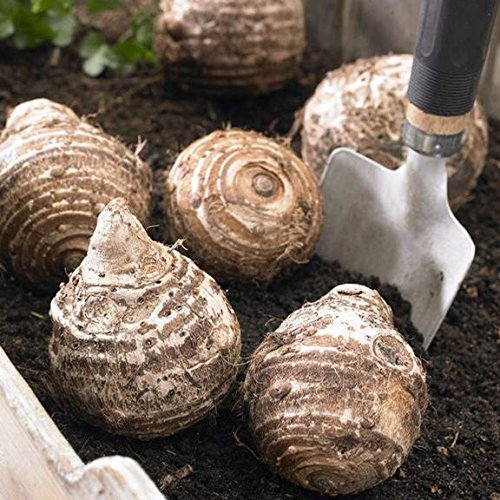All Categories



Elephant Ears (colocasia) 3 Bulb- bold tropical effect to and landscape.
Share Tweet
Get it between 2025-08-26 to 2025-09-02. Additional 3 business days for provincial shipping.
*Price and Stocks may change without prior notice
*Packaging of actual item may differ from photo shown
- Electrical items MAY be 110 volts.
- 7 Day Return Policy
- All products are genuine and original
- Cash On Delivery/Cash Upon Pickup Available








Elephant Ears (colocasia) 3 Bulb- bold tropical Features
-
Foliage:Deciduous, Sunlight:Full Sun
-
Season Of Interest:Summer
-
Foliage: deciduous, sunlight: full sun
-
Season of interest: summer
About Elephant Ears (colocasia) 3 Bulb- Bold Tropical
Daikon RadishThe Elephant Ear (Colocasia) plant is perennial herb that grows up to 9 feet (3 meters) in height and sprouts large, arrow-shape leaves. It gets its name because the large leaves resemble the ears on an elephant. To grow Elephant Ear plants, you should give each plant at least 3 feet (1 meter) of space, average or better quality soil, monthly fertilization, frequent watering, and partial shade these tropical plants also need to be kept warm, so if temperatures average below 40 to 45ºF (4 to 7ºC) for any extended period of time, dig up the tuber in the fall and store it in a cool, dry place until you can replant it the following spring.The elephant ear plant (Colocasia) provides a bold tropical effect in nearly bold tropical effect setting. In fact, these plants are commonly grown for their large, tropical-looking foliage, which is reminiscent of elephant ears. Keep reading to learn more about how to take care of an elephant ear plant. Elephant Ears Gardening Uses There are a number of uses for elephant ears in the garden. These plants come in a variety of colors and sizes. Elephant ear plants can be used as background plants, ground covers, or edging, especially around ponds or along walkways or patio enclosures. Their most common use, however, is as an accent or focal point. Many are even well adapted to growing in containers. Planting Elephant Ear Bulbs Growing elephant ear plants is easy. Most of these plants prefer rich, moist soil and can be grown in full sun, but they generally prefer partial shade. The tubers can be placed directly outdoors once the threat of frost or freezing temperatures have ceased in your area. Plant the tubers about 2 to 3 inches deep, blunt end down. Planting elephant ear bulbs indoors approximately eight weeks prior to the last frost date is also acceptable. If growing in pots use a rich, organic potting soil and plant them at the same depth. Harden off elephant ear plants for abou Exported By ExportYourStore




 (1)
(1)
























